Deciphering single-cell landscape unravels cell-type-specific functional roles of RNA m6A modification in atherosclerosis
- PMID: 40225569
- PMCID: PMC11984397
- DOI: 10.7150/thno.104179
Deciphering single-cell landscape unravels cell-type-specific functional roles of RNA m6A modification in atherosclerosis
Abstract
Background: Atherosclerosis is a chronic inflammatory disease that is the major cause of mortality worldwide. Although several studies have assessed the function of m6A (N6-methyladenosine) modification in atherosclerosis, its regulatory mechanism at the single-cell level remains unclear. This study provides a comprehensive single-cell atlas of m6A modification regulating cell-type-specific functions in atherosclerosis. Methods: We analyzed single-cell sequencing data derived from atherosclerosis patients to elucidate the influence of m6A modification on diverse cell types. We demonstrated the potential regulatory functions of m6A regulators across various cell types and key transcription factors involved. Furthermore, we discovered m6A regulators mediated intercellular communication in important biological processes. In vitro experiments were conducted to further investigate the effects of ALKBH5, WTAP and METTL3 on atherosclerosis. Results: ALKBH5 upregulated in endothelial cells induced cell proliferation and migration involved in sprouting angiogenesis. In smooth muscle cells, upregulation of WTAP enhanced proliferation, migration and phenotypic transformation. Upregulation of METTL3 and YTHDF2 promoted macrophage activation and differentiation. Furthermore, we identified abnormally activated transcription factors could regulate m6A regulators in a cell-type-specific manner. Moreover, we revealed that m6A regulators were implicated in dysregulated intercellular communication in atherosclerosis. And a series of experimental validations supported the conclusion that m6A regulators exert cell-type-specific regulatory functions. Conclusion: Our study provided evidence for the roles of ALKBH5, WTAP and METTL3 in orchestrating atherosclerotic cell-type-specific functions, representing promising targets for precision medicine.
Keywords: Atherosclerosis; Endothelial cell; Macrophage; Single-cell; Smooth muscle cell; m6A.
© The author(s).
Conflict of interest statement
Competing Interests: The authors have declared that no competing interest exists.
Figures

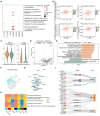

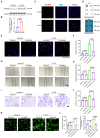
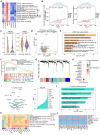
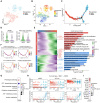
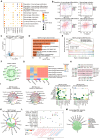
Similar articles
-
RNA m6A methylation regulators in sepsis.Mol Cell Biochem. 2024 Sep;479(9):2165-2180. doi: 10.1007/s11010-023-04841-w. Epub 2023 Sep 2. Mol Cell Biochem. 2024. PMID: 37659034 Review.
-
The methyltransferase METTL3 regulates endothelial cell proliferation and inflammation via m6A RNA methylation-mediated TRAF1 expression.Biochem Biophys Res Commun. 2024 Nov 5;732:150399. doi: 10.1016/j.bbrc.2024.150399. Epub 2024 Jul 14. Biochem Biophys Res Commun. 2024. PMID: 39033551
-
ALKBH5 Regulates Macrophage Senescence and Accelerates Atherosclerosis by Promoting CCL5 m6A Modification.Arterioscler Thromb Vasc Biol. 2025 Jun;45(6):928-944. doi: 10.1161/ATVBAHA.125.322508. Epub 2025 Apr 3. Arterioscler Thromb Vasc Biol. 2025. PMID: 40177773
-
N6-Methyladenosine detected in RNA of testicular germ cell tumors is controlled by METTL3, ALKBH5, YTHDC1/F1/F2, and HNRNPC as writers, erasers, and readers.Andrology. 2019 Jul;7(4):498-506. doi: 10.1111/andr.12612. Epub 2019 Mar 23. Andrology. 2019. PMID: 30903744
-
RNA m6A modification, signals for degradation or stabilisation?Biochem Soc Trans. 2024 Apr 24;52(2):707-717. doi: 10.1042/BST20230574. Biochem Soc Trans. 2024. PMID: 38629637 Free PMC article. Review.
References
MeSH terms
Substances
LinkOut - more resources
Full Text Sources
Medical

